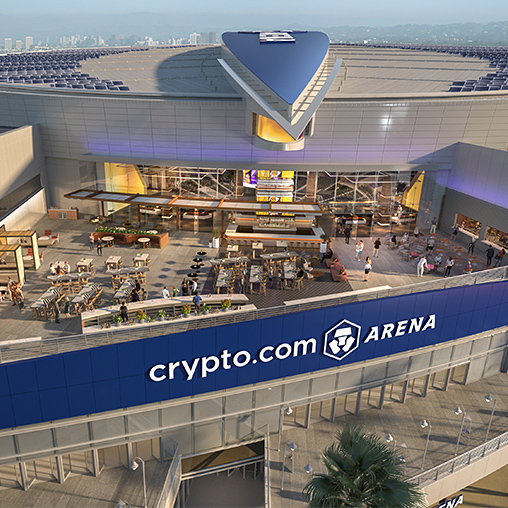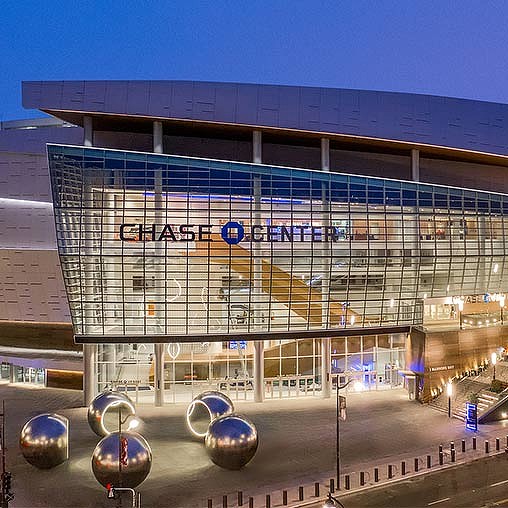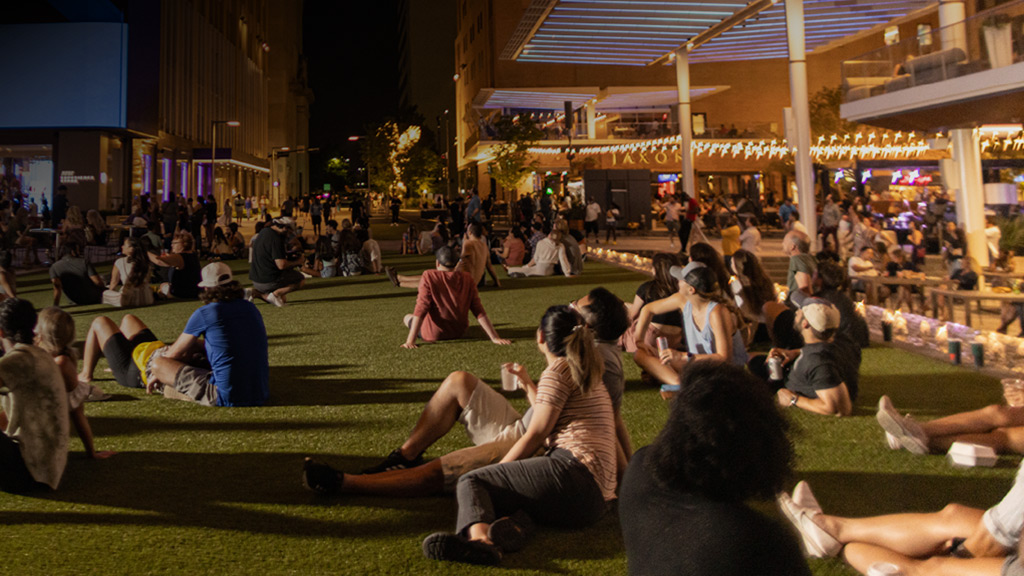Sports

San Diego State University, Snapdragon Stadium

University of Texas at Austin, Moody Center

Los Angeles Chargers Headquarters and Training Facility

New York Mets Citi Field

BMO Stadium

University of South Carolina Football Operations Building

Crypto.com Arena

Irvine Amphitheater

Rocket Mortgage FieldHouse

LAFC Performance Center

The Star

St. David’s Performance Center

Chase Center

M&T Bank Stadium

New York Red Bulls Training Complex

Harvard Westlake School, River Park Campus

Texas Athletics Basketball and Rowing Training Facility

UC Davis Student Athlete Performance Center

The Hub on Causeway

Atari Hotels

Q2 Stadium

Auburn University Player Development Facility

Shougang Ice Hockey Arena

San Jose State University Spartan Recreation and Aquatic Center

Texas A&M Softball Stadium

Southwestern College, Wellness and Aquatic Complex

Louisiana Tech University Joe Aillet Stadium Renovations

Trends to Watch: How the Rise of Women’s Professional Sports Is Impacting Venue Design

How BMO Stadium Extends the Fan Experience Beyond the Gate

How to Design Practice Facilities Centered on Athletes’ Mental Health

Magnetizing People & Places Through the Power of Brand

What Two Leading Edge Venues Reveal About the Future of College Sports

How the EveryFan Journey Drives Engagement in Stadium Design

The Future of Sports Venues Is About Creating Vibrant, Multiuse Districts

Fans Are Hungry for New Seating Options at Sports Venues

Baseball Is Changing. Here’s How Cities Could Change With It.

From College Playoffs to the Super Bowl: How Can We Reimagine Live Sports Experiences?

Bob Weis, Former President of Walt Disney Imagineering, on Immersive Experiences and the Story of Our Cities and Spaces

What Sports Venues Must Do to Be Tomorrow’s Cultural and Economic Anchors

Sports Experience Survey 2022

Designing an Innovation District for the City of Austin

Design Forecast 2022: Sports
The barriers between arenas and cities will become more porous and multiuse as sports districts redefine city living.
As sports venues become integrated into urban cores, the perimeters separating arenas, stadiums, and cities will dissipate. By activating real estate and experiences surrounding the sports venue, owners, partners, and developers can create 24/7, walkable districts that increase foot traffic, decrease the need for parking, and enhance value for their overall franchise.
Public-private partnerships will bring new funding — and new sports developments — to colleges and universities.
For universities and colleges facing a shrinking donor pool, public-private partnerships (P3s) offer an alternative financing source for new sports developments or renovations. Whether to fund capital improvements or address deferred maintenance on aging assets, these partnerships can benefit schools and drive revenue for developers.
Dedicated facilities for women’s sports will continue to gain traction around the world.
With the rising success of programs like the Women’s World Cup and the WNBA, development for dedicated facilities and programs for women’s sports is accelerating. In addition to dedicated stadiums and arenas for women’s sports, training and performance facilities that cater to the specific needs of female athletes, from training regimens to rehabilitation, will be highly sought after.


Ron Turner

Ryan Sickman

Steve Chung

Andrew Jacobs

Demetra Thornton

Elizabeth Pritchett

Jonathan Emmett

Kristin Byrd

Omar Quesada

Tayomara Gama

CNN Explored the Importance of Efficient Restroom Design in Stadiums Ahead of the Super Bowl

ENR New York Recognized Gensler’s Citi Field Upgrades with the 2023 Award of Merit in Sports/Entertainment

Q&A With Demetra Thornton on Shaping the Future of Sports Design at Gensler

Sports Business Journal Featured an Interview with Gensler’s Director of Sports, Jon Niemuth

Transformative Investments at Grand Sierra Resort Include a Gensler-Designed Sports Stadium

The Tampa Bay Rays Eye a $1.3 Billion Ballpark, Designed by Gensler, in St. Petersburg

The Rise of Seating Options for Sports Fans

Gensler and Rafael de La-Hoz Will Design the New Benito Villamarín Stadium

Gensler and Rafael de La-Hoz Have Been Selected To Design the New Benito Villamarín Stadium

The Philadelphia 76ers’ New Mixed-Use Stadium Complex Now Includes a Residential Tower

The Philadelphia 76ers’ Proposed Arena Features a Mixed-Income Apartment Building

New Crypto.com Arena Luxury Suites Will Grant Fans Access to Players’ Tunnel

Green Sports Alliance Releases “Building For The Next Generation” Playbook

Gensler’s Design of the Moody Center Feels Approachable from Ground Level

Sports Business Journal Highlighted How Mercedes-Benz Stadium Is Launching AT&T Lofts
